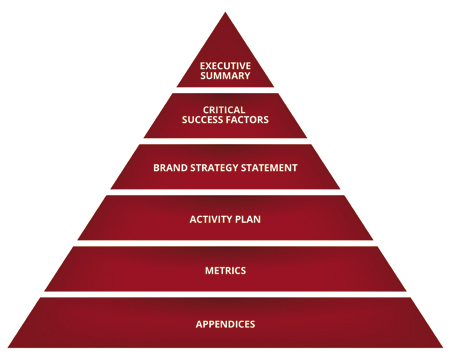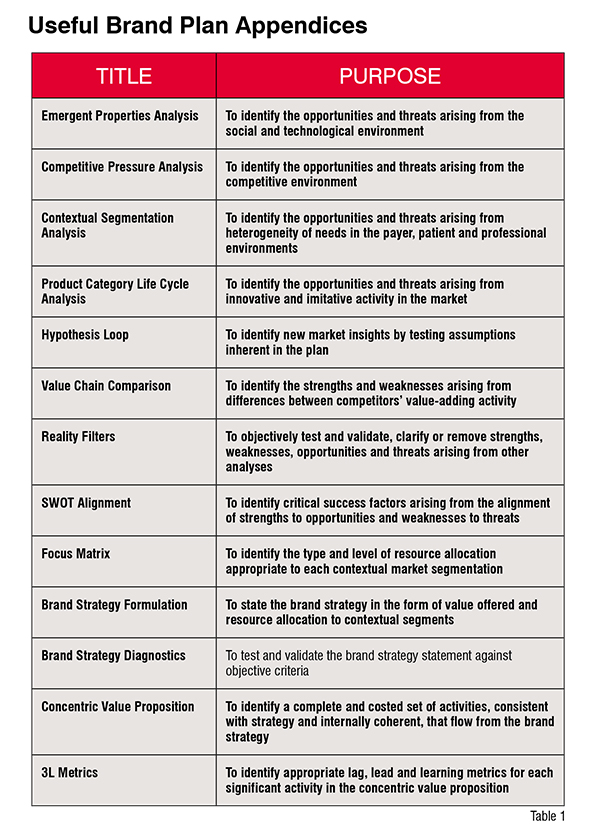In most life science companies, the brand plan document is not fit for purpose. Intended to communicate the plan and gain commitment, It is typically a time consuming tome that is rarely read and often ridiculed. The problem lies not in the content but in the way that it is structured. In this article, I describe the way that brand plans are evolving into something better adapted to the 21st century life science industry.
In life science companies, the brand plan is ubiquitous, important and expensive. Every brand has one, it drives success (or causes failure) and brand teams invest huge amounts of time and money in the annual ritual of writing and executing this essential document.
And yet the brand plan itself if often an object of ridicule. Once written, it rarely becomes the well-used, oftenconsulted guide to implementation that it should be. More often, it sits on a shelf until, next year, it is dusted off and used as a template for the next plan. This isn’t how it is supposed to be and, in this article, I’ll explain why this happens and how your brand plan can become a useful, working document. What’s more, my remedy will cost you nothing and require no more work than your existing process for writing the brand plan.

Why are dust-collecting, ignored brand plans are so common in pharma and medtech companies? After all, the people who write them are intelligent and hardworking. My research indicates that, to adapt an English idiom, the problem is that brand plans fall between three stools. In other words, they try to do three things at once and, as a result, fail at all of them.
Firstly, brand plans try to be a comprehensive repository of all the analysis and thinking that the brand team have done. This is a useful thing to have because it helps brand teams maintain continuity. Secondly, brand plans try to be a rallying call, communicating the brand strategy clearly to motivate those who must implement it. Since brand strategy is executed cross-functionally, this is also an important purpose of a good brand plan. Thirdly, brand plans try to enable approval from senior colleagues, which is essential given their costs and importance to the business.
All three goals are important, of course. But they require very different documents. A good repository would be extensive and detailed. By contrast, a plan that tries to communicate and motivate needs to be succinct and to the point. And an approval document needs to both focus on the strategic issues but also provide enough detailed information to explain and justify strategic choices.
For one document to fulfil all do those three things is a big ask. It is like asking for a glamorous, highperformance car that holds a large family’s holiday luggage and is very cheap to buy and run. The typical result of these conflicting demands is a compromise: a brand plan that doe none of these three things very well. Such compromise plans fall between the three stools of repository, communication and approval. That’s why, in practice, they sit on the shelf between planning cycles.
This description of a compromise, ineffective brand plan seems to resonate with most life science brand leaders, but not all. In my research, a tiny minority have solved this problem. What is more, they have done so little effort and at no additional cost.
The leading companies I studied use a Wedge brand plan structure, meaning a very short plan (usually 5 or 6 pages) supported by an extensive set of appendices. The short plan does the job of both communicating the strategic issues and communicating the strategy. The appendices provide the necessary detail to act as repository and to explain strategic choices. Importantly, Wedge brand plans usually contain the same information as more traditional plan structures. It is only the organisation of that information that is different.
The strength of the Wedge structure is that everyone can easily read the short plan whilst the appendices can be read selectively when the reader has a particular interest or has a question about something in the short plan.
In practice, the key to making a Wedge plan structure work is to put the right information in the right place. The short plan must contain a few key things and no more. The appendices must contain everything necessary to support those few essential elements.
To be effective, the short plan must contain 5 short sections, as shown in figure 1.
The executive summary should be a paragraph of less than 200 words. It must describe the scope of the plan, give a distillation of the brand strategy statement, summarise new activities that will contribute significantly to achieving customer preference and provide a quantified statement of both resources to be expended and returns expected.
The critical success factors section should state the 6 to 10 critical success factors that the brand strategy must address. This should typically occupy about half a page but this section is closely cross-referenced to the various supporting appendices which analyse the market situation.
The brand strategy statement must make clear what value will be offered to which market segments and, just as importantly, the parts of the market from which resources will be withdrawn or with-held. This is usually no more than a paragraph.
The activity plan consists of a brief description of those activities most important to the brand strategy or that require large shifts in resource allocation. This section is typically one or two pages but cross references to various appendices that describe the detailed activity, their costs and their intended outcomes.
The metrics section must contain the headlines of three kinds of metrics: lag, lead, and learning. This section is typically one or two pages but again is cross-referenced to various appendices, such as sales targets, measures of activity outcome and measures that test any assumptions inherent in the plan.
This 5-section structure of the short plan should be the same for any brand and any market because this allows senior leadership to compare easily between brands and businesses. Importantly, it is important to resist the temptation to “just add in this section”. If the short plan exceeds 5-6 well-spaced pages, it will no longer do its job.
The appendices should include anything that’s needed to support the statements made in the short plan. In most cases, most of the content needed for the appendices will already be written but currently be included in the main part of the plan. Although the short plan structure can and should stay the same across brands, the choice of appendices can and should vary widely depending on the situation.

That said, there are certain analyses that are almost always valuable and should be in the appendices of any brand plan. These are summarised in table 1, which acts as a guide, but not a constraint, to the structuring of this second, much larger section of the document.
One beneficial side-effect of using this set of usually-necessary appendices is that, in practice, it often illuminates gaps or weaknesses in the thinking behind the brand plan. Space does not allow me to explain each of these methods in this article, but full details are in my book Brand Therapy.
Almost all business problems are either trivial and easy to solve or provide big benefits but are fiendishly complicated. Almost never does an easy solution have a big impact on the business. But the effectiveness, or otherwise, of brand plans is something that can profoundly influence the success of the firm and the Wedge brand plan structure, currently used by only a tiny minority of firms, is a solution that can be easily adopted by any brand team.
The Wedge structure works because it addresses all three goals of a brand plan—repository, approval and communication—and it does so by the simple expedient of restructuring much the same content contained in traditional plans. No extra content is needed, although the newly-clear structure may illuminate the need for some new analyses, such as those in table 1.

In practice, the biggest challenge to implementing a Wedge brand plan structure is not technical but cultural. After decades of reading brand plans that are hundreds of pages long, some firms struggle to accept a document of 5 pages, even when supported by a mass of appendices. But, as leading firms have no recognised, when it comes to brand plans it is often true that less is more.